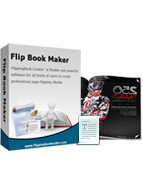
As the bit goes through each piece of photo paper, it messes up the paper just a bit and causes a slight raise in the paper. But for this I had to use a standard electric drill and a 1/4" bit. Now, I don't have a paper drill bit - I wish I did and I'm seriously considering purchasing one. Square up your stack and clamp them tight - wrap the photos if you like, but I knew I'd be tossing the first and last one anyway, so I just pushed on. You want this stack to not only be as square as possible, but you want that right edge to be cut consistently so the animation is fluid. Finally, the more accurate you can be with your trimming - ESPECIALLY on the right edge - the better. If you wrote the number on the back of each image like I suggested earlier, this will never be a problem. This way you won't make the mistake I did which is drilling through the numbers. Move it down to the middle of the left black border.

Keep reading and I think this will begin to make sense. Also, they would have needed to have been rotated 90 degrees and that wouldn't have left much border which will be needed for drilling later. I might have been able to fit 2 images to a 4圆" photo - saving money but the images would have been slightly smaller. The black border will be covered by a leather binding in a later step. The number is good in case the photos are printed out of order (they were) or if you drop the stack (I did). Notice here that I left the left black border and number. I used a nice cutter to trim each photo to the correct size. If you don't have the ability to shoot in Widescreen OR if your subject is centered in your clip, just make your border cover less of the right side of the image and you may even have to build in a left side block to leave in. I knew I would be turning this into a flipbook, so I intentionally kept the subject as far to the right as possible. Also, notice that when I shot this video I kept the subject on the right side of the movie. I could have used a different color for the border but black made the white guidelines easier to see - I changed the guidelines to black when they moved off of the black border - not a big deal if you don't do this, but it helps if the developer doesn't line up the image square on the paper you'll have at least one end of a guideline that touches the edge of the photo, but hopefully two ends of each guideline. This will create a 4圆 jpeg that I can have developed at the camera store and if I'm careful to use the guidelines to cut, all my images should match up and provide a nice smooth animation. I used the Text tool to give it a number (16) and export it to a jpeg using the screen dimensions. Here you can see that the image has been pasted into the work area - the other image shows the picture with the border hidden. Ctrl-X pastes the resized image directly in the center of the 4圆 work area and the black frame covers part of the photo (see next step). I then resized it (40% of original) and then I cut the image using Ctrl-V.

My work around is seen here - I import the jpeg but it's very large at first. Another reason not to use just plain photo prints is that the developer sometimes doesn't load the photo paper into the hopper properly and you get the occasional image that is slightly askew - a little white on bottom and the image at a very slight angle - ruins the affect. Using smaller sized images gives a stiffer stack and is easier to flip - just trust me OR try it with a large 4圆 photo stack.

Why not just use the entire photo (4圆" is the size of the black border in the image here)? You could but the larger stack of photos doesn't flip very well. I would also use the border to put the frame # as well as cutting guidelines. The border layer was on top of the photo layer and would create a frame of the picture. What I did here was create 2 layers: (1) photo and (2) border.
PHOTO FLIP BOOK MAKER ONLINE SOFTWARE
I think any graphics software that has the ability to use layers, import jpegs, and export to jpegs will work. For this step I used Flash (an OLD version).


 0 kommentar(er)
0 kommentar(er)
